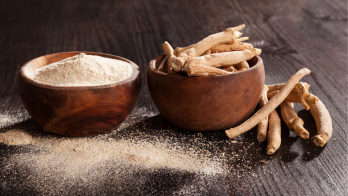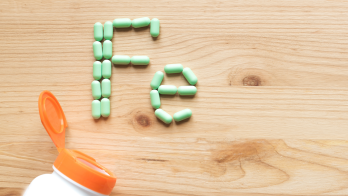10 important dos and don’ts for muscle recovery
Muscle recovery is an essential part of any training regimen. But are certain things you’re doing (or not doing) holding you back? From prioritizing protein to skipping cooldowns, here are 10 must-know dos and dont’s for muscle recovery.
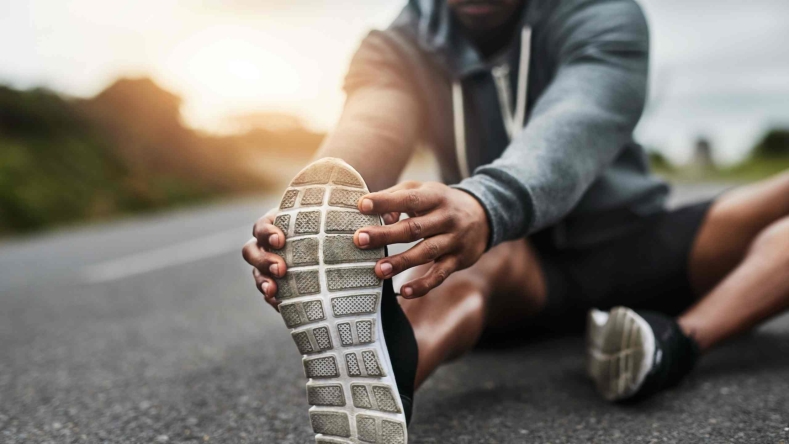
Contents
What is muscle recovery, and why is it important? 10 muscle recovery dos and don’ts #1: Don't skip your cooldown. #2: Don’t overindulge in processed foods, added sugars, and alcohol. #3: Don’t skimp on sleep.� #4: Don't ignore pain and soreness. #5: Don’t train too hard, too often. #6: Do prioritize protein, quality carbohydrates, and water. #7: Do up your intake of anti-inflammatory foods. #8: Do consider recovery-boosting supplements. #9: Do foam roll and massage. #10: Do honor your recovery days. Summary Key takeawaysWhether you're a seasoned athlete or just getting started on your fitness journey, understanding the importance of muscle recovery and how to achieve it is essential for achieving your goals. In this guide, you'll learn about why muscle recovery is important and what helps muscles recover, as well as the essential dos and don'ts for muscle recovery.
Before we dive into what you should and shouldn’t be doing for muscle recovery, let’s first explore what muscle recovery is and why it's important.
What is muscle recovery, and why is it important?
Muscle recovery is the process by which your body repairs and rebuilds depleted and damaged muscles after exercise.
Strenuous physical activity, including strength training, high-intensity exercise, or prolonged endurance exercise, damages muscle fibers, depletes energy and fluid stores, increases inflammation, and dampens your immune system. All of these effects put you at greater risk for soreness, injury, and illness [ 1 2 3 4
With proper recovery practices 5 6
All in all, having a good muscle recovery routine will help you get the most out of your workouts, maximize your gains between training sessions, and keep your body primed for optimal performance.
Now that you know what muscle recovery is and why it’s important, let’s explore what you should and shouldn’t do between workouts to boost muscle recovery.
10 muscle recovery dos and don’ts
To quicken your recovery muscle recovery process, here are some essential dos and don'ts to keep in mind.
#1: Don't skip your cooldown.
While you may feel like coming to a full stop after a tough workout or simply forget to make time for it, a proper cooldown benefits recovery by gradually bringing your heart rate, blood pressure, and body temperature back to normal, promoting continued blood flow to your muscles, and reducing the depression of circulating immune cells that contributes to exercise-induced immune suppression [ 7
To reap the recovery benefits, aim to spend 5-10 minutes cooling down after each workout with some low-intensity cardio like walking or a gentle yoga flow. Follow this with a few minutes of massage or foam rolling for maximum benefits.

#2: Don’t overindulge in processed foods, added sugars, and alcohol.
When you’re training hard and burning lots of calories, you may feel more tempted to make more stops at the drive-through, indulge in sugary desserts, or even crack open a few beers with your friends afterward.
While indulging in these may feel like a reward, highly processed foods, unhealthy fats, excess sugar alcohol 8
#3: Don’t skimp on sleep.
Sleep plays a critical but often-overlooked role in muscle recovery. It’s when your body repairs tissues, including muscles damaged during exercise, and also helps to regulate hormones like cortisol and growth hormone, which play major roles in muscle growth and recovery.
Studies have shown just one night of sleep deprivation can reduce muscle protein synthesis in athletes by 18%[ 9 10 11
To optimize muscle recovery and performance, experts recommend getting at least 7-9 hours of quality sleep per night [ 12
#4: Don't ignore pain and soreness.
While muscle soreness is a normal part of training and recovery, persistent or severe pain can signal injury or overuse, and pushing through it can lead to further damage, training setbacks, or even a full-blown injury.
If you're experiencing pain or soreness that lasts for more than a few days, take a break from your workouts and consult a doctor or physical therapist to address those aches and pains.
#5: Don’t train too hard, too often.
It doesn’t matter if you’re new to fitness or a seasoned athlete–overtraining is a common pitfall for many exercise enthusiasts.
Overtraining is a condition that occurs when you constantly push your body beyond its limits without allowing adequate time for recovery. This can lead to a variety of negative outcomes, including decreased performance, increased inflammation and risk of injury, and even hormonal imbalances [ 13 science-backed tips to help you recover
You can avoid overtraining by allowing your body adequate time to rest and recover between workouts and by taking a slow and steady approach to achieving your fitness goals. If you’re strength training, give muscle groups 1-2 days of rest between sessions. You should also avoid strenuous exercise if you’re experiencing soreness, fatigue, or an injury and focus on making gradual strength and endurance gains over time.
Now that you know what not to do, here are five things you can and should do that will help you optimize recovery and maximize future performance.
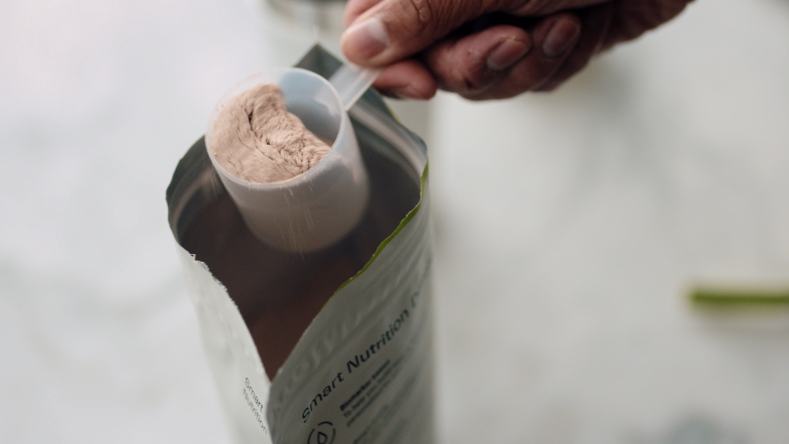
#6: Do prioritize protein, quality carbohydrates, and water.
One of the most important things you can do to support muscle recovery is to fuel it with the proper nutrients.
Research continues to show that protein and carbohydrates are essential for muscle repair and growth and replenishing your muscles' energy stores, so it’s important that you prioritize these macronutrients post-workout. As such, experts recommend getting 20-40 g of high-quality protein and 45-90 g of carbohydrates within 60 minutes of finishing a strenuous training session [ 5 6
If you’re on the go or don’t have time for a full meal, post-workout recovery supplements, like
Elo Smart Protein
, can boost recovery by helping you meet your post-workout nutrition needs.
In addition to prioritizing protein and carbs, be sure to drink plenty of water throughout the day, especially before, during, and after exercise. Rehydrating after a workout is especially important for muscle recovery as water regulates heart rate, body temperature, and muscle contractions, lubricates joints, and delivers key nutrients to muscles for muscle protein synthesis. Some evidence suggests dehydration may even exacerbate exercise-induced muscle damage and prolong recovery [ 19

#7: Do up your intake of anti-inflammatory foods.
Inflammation is a normal response to exercise, but too much can hinder your progress, slow your recovery, and increase your risk of injury. Incorporating plenty of inflammation-fighting foods into your diet can help to reduce exercise-induced inflammation and support muscle recovery.
Here are some good ones to include:
Dark leafy greens (including spinach, kale, and Swiss chard)
Fatty fish (such as salmon, mackerel, and sardines)
Fruit (such as berries, cherries, grapes, and citrus fruits)
Nuts (especially almonds and walnuts)
These foods not only help to reduce inflammation but also provide a range of other health benefits, making them an excellent addition to your recovery regimen.
Here are even more ways you can reduce inflammation
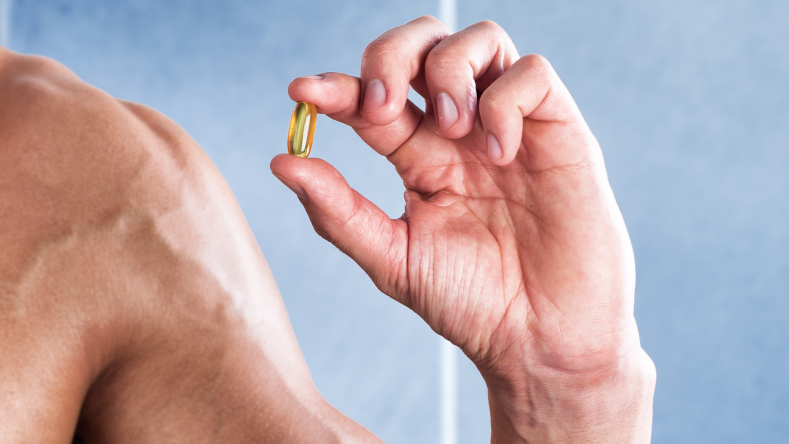
#8: Do consider recovery-boosting supplements.
While you can enhance recovery with certain foods, stretches, and rest days, what you choose to supplement with can also play a factor. Studies have found that a handful of supplements can support muscle recovery creatine curcumin fish oil BCAAs
While there is some evidence to suggest that muscle recovery supplements work, their effectiveness can vary depending on factors like age, gender, activity level, goals, and the specific supplement in question. To see if a supplement is right for you, talk with your healthcare provider before adding anything new to your routine.
If you’re considering supplementation to level up your recovery, Elo Health offers smart supplements personalized protein Elo Health
#9: Do foam roll and massage.
When it comes to recovery, massage and foam rolling can be highly effective for reducing post-workout soreness and stiffness and may also help increase range of motion and flexibility [ 15 16
While sports massages are nice, they’re definitely a splurge. The good news is you can experience similar recovery benefits by foam rolling individual muscle groups for as little as 60 seconds twice per day. For smaller areas or more targeted muscle release, a hard ball (like a tennis or lacrosse ball) can also work wonders.
#10: Do honor your recovery days.
While it may be tempting to squeeze in a quick workout on a rest day, incorporating recovery days into your routine is essential to prevent overtraining and promote optimal muscle recovery and performance [ 17
Passive recovery days give your body the downtime it needs to repair and rebuild your muscles and require no extra effort or movement outside of your usual daily activities.
Active recovery can aid recovery by reducing lactic acid and metabolic waste buildup in muscles, increasing blood flow to muscles, and reducing muscle soreness [ 18
Gentle yoga
Stretching and foam rolling
Low-intensity cardio like walking, swimming, or bike riding
Incorporating both passive and active recovery days into your routine will help to prevent overtraining, reduce muscle soreness, and support your overall recovery.
How much recovery time do muscles need?
If you’re wondering how much recovery time muscles need, the answer will depend on a variety of factors, including your age, fitness level, the frequency and intensity of your workouts, and how you prioritize recovery.
In general, most experts recommend allowing at least 48 hours of recovery time between workouts that target the same muscle groups. This allows your muscles adequate time to repair and rebuild themselves before being subjected to additional stress.
That said, it's important to listen to your body and adjust your recovery time if needed. Signs that you may need more recovery time include persistent soreness, decreased performance, or a lack of progress in your workouts.
More workout recovery articles you may like
Summary
Proper muscle recovery is essential for achieving your fitness goals and preventing injury. By prioritizing good nutrition, rest and listening to your body's cues, you can maximize your muscle recovery and performance gains.
Learn more about how Elo Health personalized protein smart supplements
Disclaimer: The text, images, videos, and other media on this page are provided for informational purposes only and are not intended to treat, diagnose, or replace personalized medical care.
Key takeaways
Having a good muscle recovery routine will help you get the most out of your workouts, maximize your gains between training sessions, and keep your body primed for optimal performance.
As part of your recovery regimen, include plenty of high-quality protein, wholesome carbohydrates, and a variety of healthy, anti-inflammatory foods in your diet.
Cooling down, massage or foam rolling, taking adequate rest days, and listening to your body are also important for muscle recovery.
References
Murray, B., & Rosenbloom, C. (2018). Fundamentals of glycogen metabolism for coaches and athletes. Nutrition reviews, 76(4), 243–259.
https://doi.org/10.1093/nutrit/nuy001
Popkin, B. M., D'Anci, K. E., & Rosenberg, I. H. (2010). Water, hydration, and health. Nutrition reviews, 68(8), 439–458.
https://doi.org/10.1111/j.1753-4887.2010.00304.x
Cerqueira, R., Marinho, D. A., Neiva, H. P., & Lourenço, O. (2020). Inflammatory Effects of High and Moderate Intensity Exercise—A Systematic Review. Frontiers in Physiology, 10.
https://doi.org/10.3389/fphys.2019.01550
Gleeson, M., Nieman, D. C., & Pedersen, B. K. (2004). Exercise, nutrition and immune function. Journal of Sports Sciences, 22(1), 115–125.
https://doi.org/10.1080/0264041031000140590
Kerksick, C., Harvey, T., Stout, J., Campbell, B., Wilborn, C., Kreider, R., Kalman, D., Ziegenfuss, T., Lopez, H., Landis, J., Ivy, J. L., & Antonio, J. (2008). International Society of Sports Nutrition position stand: Nutrient timing. Journal of the International Society of Sports Nutrition, 5(1).
https://doi.org/10.1186/1550-2783-5-17
Kerksick, C. M., Wilborn, C. D., Roberts, M. D., Smith-Ryan, A., Kleiner, S. M., Jäger, R., Collins, R., Cooke, M., Davis, J. N., Galvan, E., Greenwood, M., Lowery, L. M., Wildman, R., Antonio, J., & Kreider, R. B. (2018). ISSN exercise & sports nutrition review update: research & recommendations. Journal of the International Society of Sports Nutrition, 15(1).
https://doi.org/10.1186/s12970-018-0242-y
Van Hooren, B., & Peake, J. M. (2018). Do We Need a Cool-Down After Exercise? A Narrative Review of the Psychophysiological Effects and the Effects on Performance, Injuries and the Long-Term Adaptive Response. Sports medicine (Auckland, N.Z.), 48(7), 1575–1595.
https://doi.org/10.1007/s40279-018-0916-2
Brody, B. (2017, January 23). Natural Anti-Inflammatory Diet. WebMD.
https://www.webmd.com/diet/anti-inflammatory-diet-road-to-good-health
Lamon, S., Morabito, A., Arentson-Lantz, E. J., Knowles, O., Vincent, G. E., Condo, D., Alexander, S., Garnham, A., Paddon-Jones, D., & Aisbett, B. (2021). The effect of acute sleep deprivation on skeletal muscle protein synthesis and the hormonal environment. Physiological Reports, 9(1).
https://doi.org/10.14814/phy2.14660
Watson, A. J. (2017). Sleep and Athletic Performance. Current Sports Medicine Reports, 16(6), 413–418.
https://doi.org/10.1249/jsr.0000000000000418
Fullagar, H. H., Skorski, S., Duffield, R., Hammes, D., Coutts, A. J., & Meyer, T. (2015b). Sleep and Athletic Performance: The Effects of Sleep Loss on Exercise Performance, and Physiological and Cognitive Responses to Exercise. Sports Medicine, 45(2), 161–186.
https://doi.org/10.1007/s40279-014-0260-0
Bird, S. (2013). Sleep, Recovery, and Athletic Performance. Strength and Conditioning Journal, 35(5), 43–47.
https://doi.org/10.1519/ssc.0b013e3182a62e2f
Kreher, J. B., & Schwartz, J. B. (2012). Overtraining syndrome: a practical guide. Sports health, 4(2), 128–138.
https://doi.org/10.1177/1941738111434406
Lamon, S., Morabito, A., Arentson-Lantz, E., Knowles, O., Vincent, G. E., Condo, D., Alexander, S. E., Garnham, A., Paddon-Jones, D., & Aisbett, B. (2021). The effect of acute sleep deprivation on skeletal muscle protein synthesis and the hormonal environment. Physiological reports, 9(1), e14660.
https://doi.org/10.14814/phy2.14660
Davis, H. L., Alabed, S., & Chico, T. J. A. (2020). Effect of sports massage on performance and recovery: a systematic review and meta-analysis. BMJ open sport & exercise medicine, 6(1), e000614.
https://doi.org/10.1136/bmjsem-2019-000614
Macdonald, G. J., Button, D. C., Drinkwater, E. J., & Behm, D. G. (2014). Foam Rolling as a Recovery Tool after an Intense Bout of Physical Activity. Medicine and Science in Sports and Exercise, 46(1), 131–142.
https://doi.org/10.1249/mss.0b013e3182a123db
Doherty, R., Madigan, S. M., Nevill, A., Warrington, G., & Ellis, J. G. (2021). The Sleep and Recovery Practices of Athletes. Nutrients, 13(4), 1330.
https://doi.org/10.3390/nu13041330
Dupuy, O., Douzi, W., Theurot, D., Bosquet, L., & Dugué, B. (2018). An Evidence-Based Approach for Choosing Post-exercise Recovery Techniques to Reduce Markers of Muscle Damage, Soreness, Fatigue, and Inflammation: A Systematic Review With Meta-Analysis. Frontiers in physiology, 9, 403.
https://doi.org/10.3389/fphys.2018.00403
Dehydration and Exercise-Induced Muscle Damage: Implications for Recovery. (2018, May 1). Gatorade Sports Science Institute. http://www.gssiweb.org:80/sports-science-exchange/article/dehydration-and-exercise-induced-muscle-damage-implications-for-recovery





